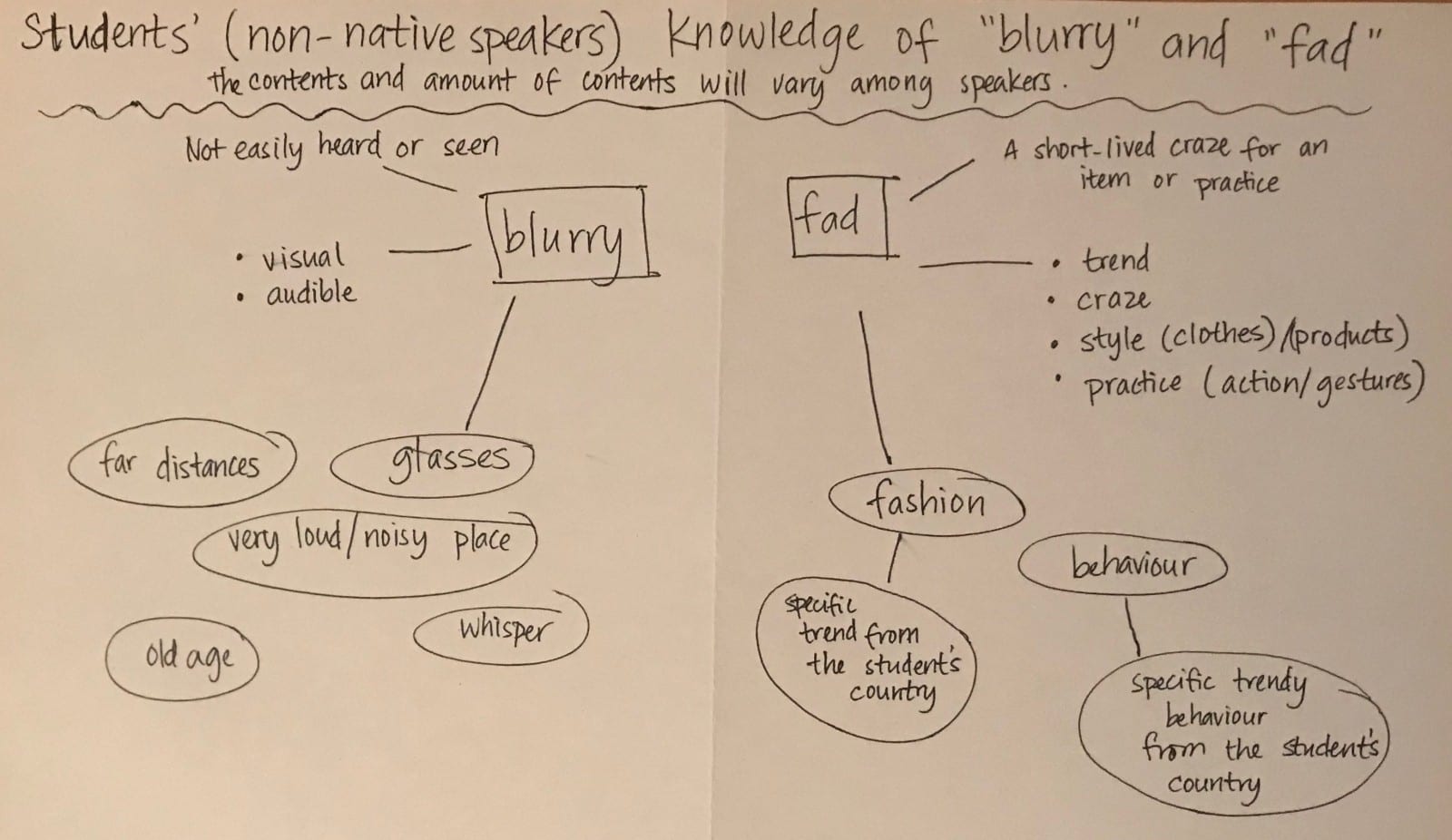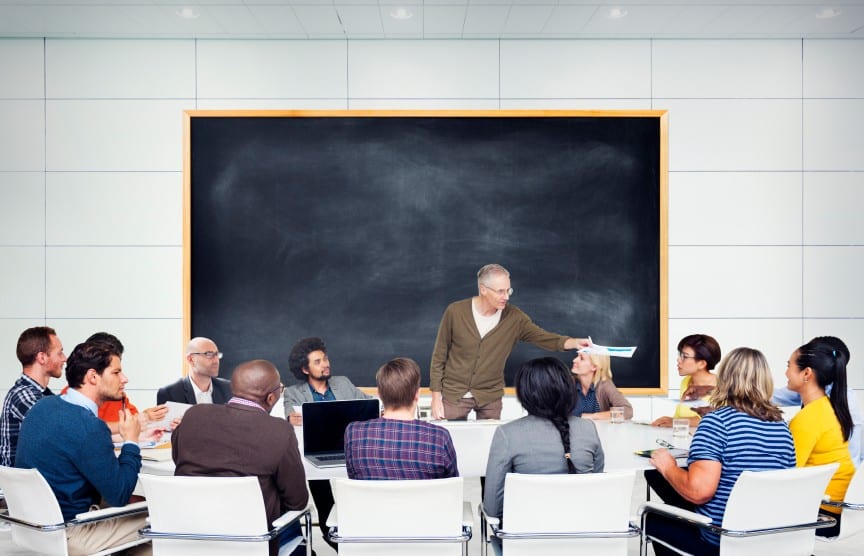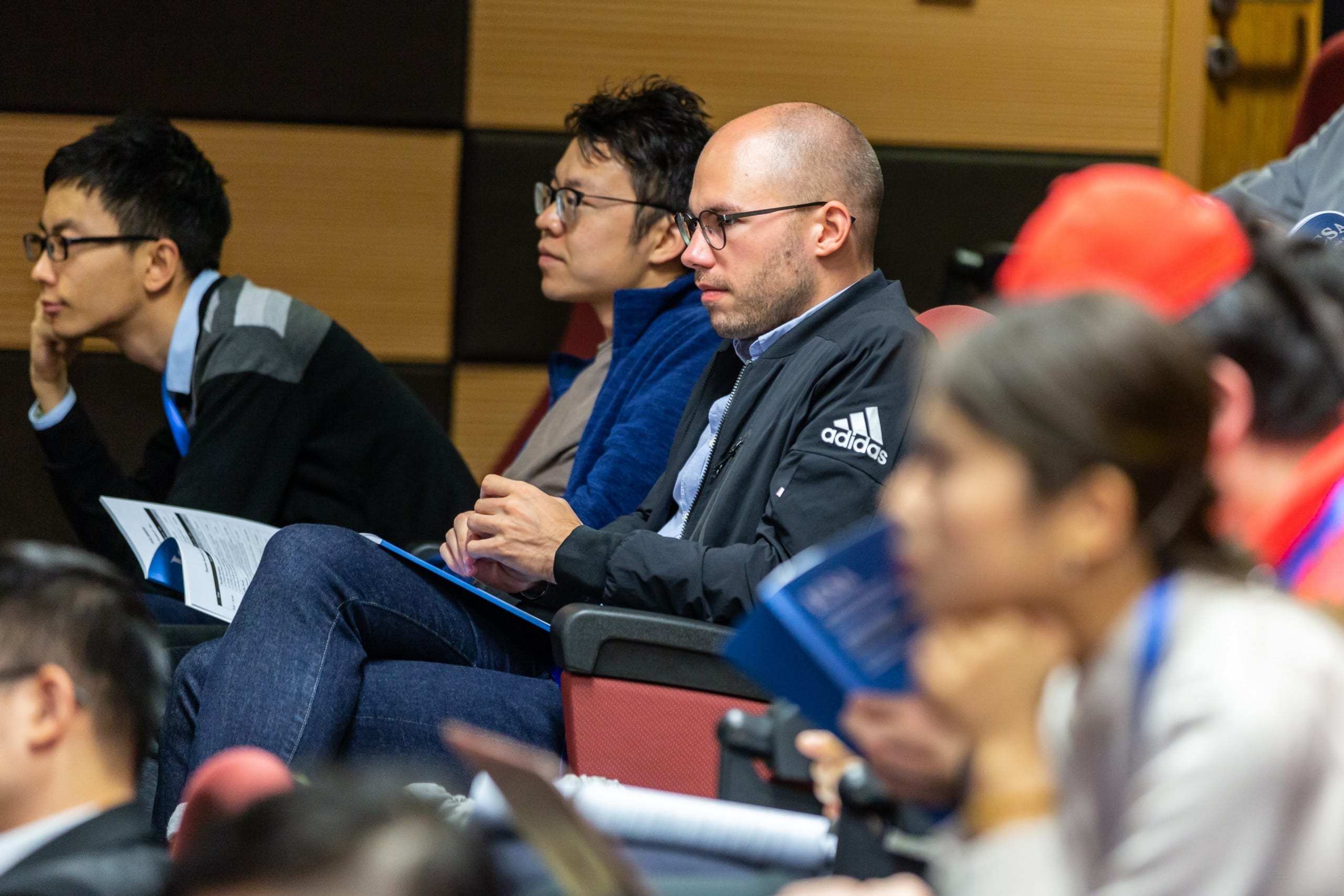In this article, I demonstrate how I teach advanced learners how to develop richer and more expansive vocabulary.
This article demonstrates perfectly how to use the communicative approach to teach vocabulary in a way that is both meaningful for the teacher and student.
About the Author: Melissa is a graduate of OnTESOL’s 120-hour Advanced TESOL Certificate course.
She recently returned from teaching English in Japan. She runs her own private teaching business where she teaches English to Korean students in Toronto, Ontario, Canada.
The Information Behind Words
Every word in a language comes with multiple layers of information. Among them include its:
-
-
- Basic meaning(s)
- Preferred contexts/common occurrences
- Associations
-
The first two criteria are what is commonly taught in vocabulary lessons in classrooms.
The third criterion is what creates the richness in native speakers’ knowledge of words.
Associations give plenty of meaning and flexibility to a word and are the reason why it can be challenging to teach puns to non-native speakers.
Enroll in our 120-hour Advanced TESOL course to learn how to teach vocabulary effectively!
Associations are acquired through ordinary life events and are influenced by the environment in which the native-speaker grows up.
This is why students and teachers should never discount the value of time, experience, and learning outside the classroom.

While it would be very difficult to replicate each of these experiences, as teachers, we can strengthen vocabulary by providing as many associations as we can with words.
Connecting Words
One useful activity is connecting words.
Finding connections among words is a challenging exercise, especially if you add more words.
Students will have to rely on their creativity and it will also encourage them to ask questions as to the word’s permissible contexts, what part of speech it is, and so on.
This reflection will give them the opportunity to get to know this word at a deeper and more meaningful level.
Exercise:
Choose 2 random words (more words can be used to make it more challenging).
Here are some of the methods I use to do this:
1. Instruct students to draw strips of words from a cup.
2. Take a page from any book, run your fingers through it, and stop at a random word. Repeat to get more words. 
3. Use a word generator website
Once the words have been chosen, students will provide an account using them.
There are numerous ways to answer.
I like to use as many as I can because this also exercises different ways to perceive a situation and it’s particularly useful for the speaking portion of language placement tests like IELTS or TOEFL.
Connecting Words – Providing Accounts Explained
An account can take the form of personal stories, historical accounts, fictional stories (like that of a novel), stating opinions, persuasive speech, and jokes.
For instance, if the given words are “blurry” and “fad” in the form of a personal story, the student can say:
“There was a fad when I was in high school for a certain type of glasses. But I don’t really remember what they look like. I do remember that my friend had them and when I tried them on, everything was so blurry”.
Find out the 3 ways a TESOL course by OnTESOL will make you a better teacher
At this point, the student is still sticking to the standard definitions and contexts for both words. 
However, the teacher can suggest that “blurry” can also be used to describe “memory” and that the student can say “my memory for it is blurry.”
The student can give an even more specific expression such as, “I remember it very vaguely”.
Therefore, the student can add more information to the preferred contexts and associations of the word. 
Using the same words, students can give other types of accounts (jokes, stating opinions, and so on).
Likewise, teachers can add more words and ask students to provide two types of accounts in one answer.
There are many “words” + “type of account” combinations (e.g. 3 words, 2 types of accounts), and teachers can gauge what works best for their students’ levels.
Conclusion
This activity not only exercises word flexibility, but it also strengthens retention of the vocabulary’s meaning and contexts.
In addition, students gain plenty of confidence knowing that they were able to perform this challenging exercise.
It also gives teachers the opportunity to teach contexts and associations more naturally, through conversation, as opposed to writing words on a board and bombarding students with too much information at one time.





